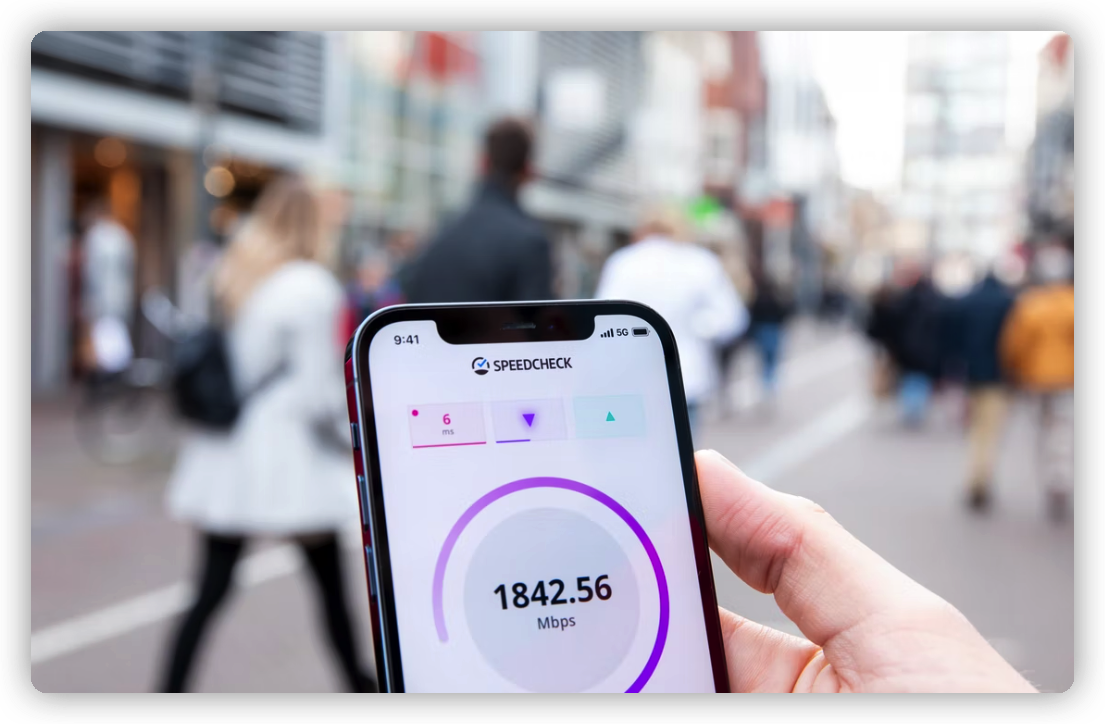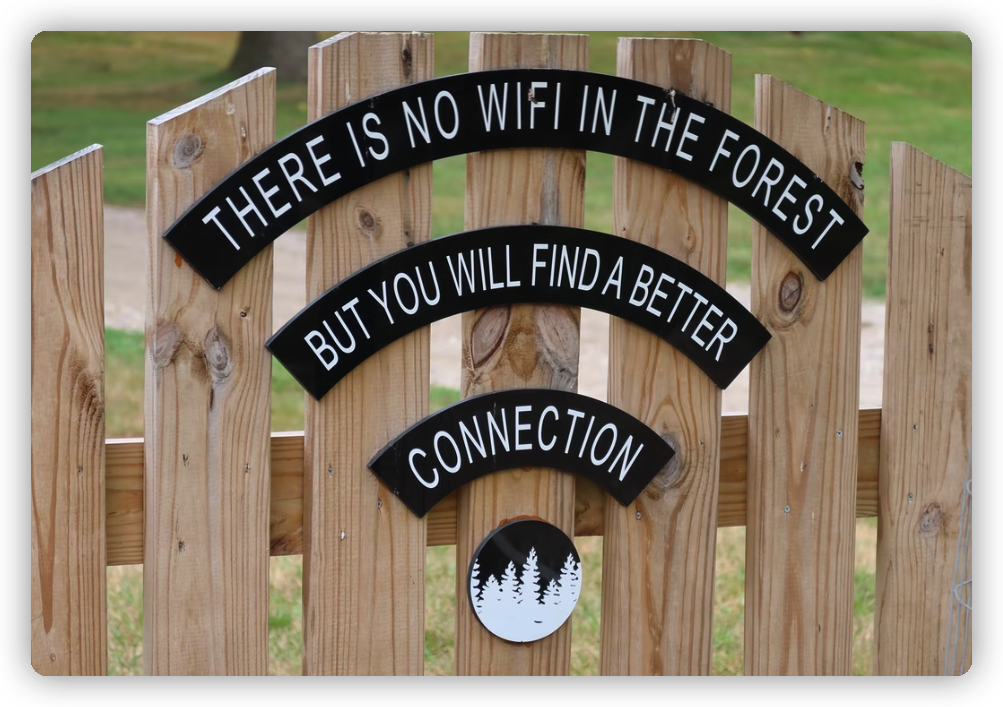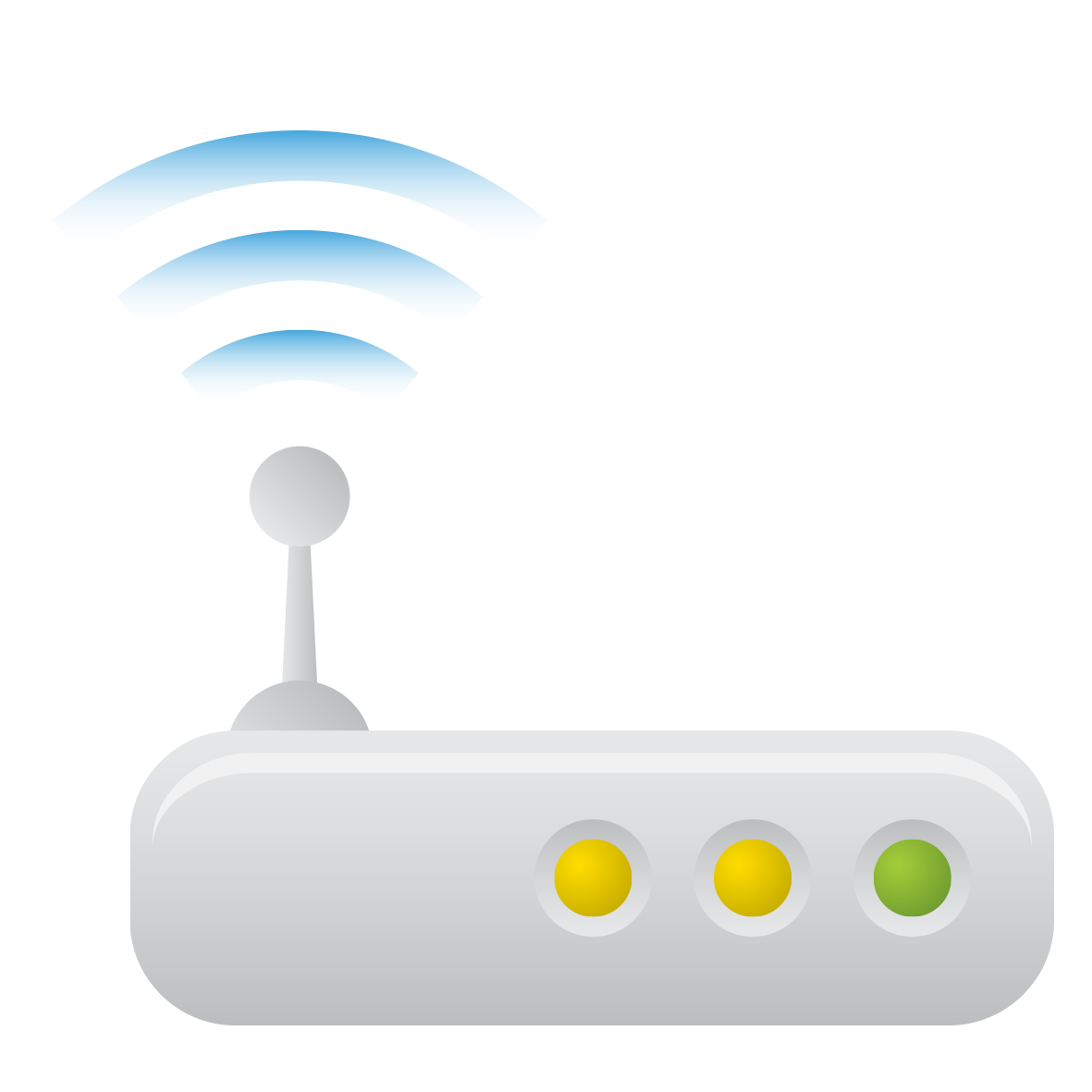Have you ever wanted to find out how the Wi-Fi router work or calculate a Wi-Fi router’s range? In this article, I will explain the working of a Wi-Fi router and how you can calculate how far you can be from your router and still maintain a good quality connection between your Wi-Fi devices and the router.
In this article, you will learn:
How Wi-Fi Transmits Signals to Devices
Wi-Fi transmits data using radio waves at frequencies between 2.4 and 5 GHz. This capacity allows for fast data transmission and reception, but it also makes it susceptible to interference from other devices that use the same frequency range.
To transmit data across a Wi-Fi network, one device must act as an access point (AP). The AP then connects all of its associated devices together into a single network using ethernet cables or over a wireless connection. Each device connected to the AP will receive Internet access from it via either cable or wireless connection depending on how many devices are connected and how many Ethernet ports the AP has.
How to Calculate Your Router’s Wi-Fi Range

When you’re trying to connect to a wireless network, it’s important to make sure that your router is compatible with the network you’re trying to connect to. You can do this by checking your router’s specifications. Additionally, you may want to check your router’s setting and see if it is operating at 5GHz frequencies or 2.4GHz frequencies. If you have never touched your router’s settings before, 2.4GHz frequencies are usually the default setting.
Let us first calculate how much wireless range your router can provide. The range is measured in the number of meters or feet that your wireless data signal can reach. The same range would cover a circle with dimensions of 3.2 meters or 8.4 feet, depending on whether you want to measure in meters or yards. If we assume the standard 2 meter radius, then it can reach around 54m (about 180 ft) away, but if we use 1 meter (3 ft), then it will be only about 15m (about 45 ft). So, the actual range will be somewhere in between those two figures. I will take the mid-point of 45m (about 150 ft) and use that value for my calculations.
If you’re using a high-end router with a powerful antenna and you’re getting a STRONG signal right at your location, then your wireless router range can be calculated by multiplying height of your house times 4 times distance (in meters or feet). I recommend using 4 times distance formula because it’s easier to calculate and the result will be pretty accurate even when you’re in a multi-level building.
Example: If your router is located on the 1st (or ground) floor of your house and you’re getting a STRONG signal right at that location, then your wireless signal can reach up to the 3rd floor where your Wi-Fi signal is not strong enough, but readable.
Note: The number of walls between router and Wi-Fi devices also have very important impact on your router range. Actually, every wall (or obstacles) between the router and Wi-Fi device will reduce your router’s range.
Factors That Affects Your Router’s Wi-Fi Range
There are many factors that will affect the range of your wireless device, and the best way to keep it running for as long as possible is to take care of it. That includes keeping your signal clean, testing signal strength in different spots using apps like Wi-Fi Analyzer and Signal Strength for Phone, and making sure you have a good wireless router.
Signal disturbances are things that interfere with your router’s ability to send and receive data. These could include physical obstructions like trees, walls, and other objects; electrical interference such as a microwave or other devices that use radio waves; or electromagnetic interference from other devices, like cordless phones or baby monitors.
Interference is caused by other wireless devices in your home or office competing for the same frequency on which your router operates—this can cause a loss of speed or signal strength in one part of your house if there are too many devices using the same frequency at once.
List Of 13 Things That Affecting Router Wi-Fi Range

1. Material that your router is made of. If it’s made of a conductive material, like metal, it will interfere with the signal as it travels.
2. Proximity of objects between the router and the device receiving the signal (such as walls or other electronics). Any object that blocks or reflects the signal can interfere.
3. Number of walls between the router and device receiving the signal (i.e., if there are lots of walls separating them). This will also cause interference because it means there are more opportunities for objects to block or reflect signals as they travel through multiple walls at once.
4. Number of different devices in use on your network. For example, if you have an older device with a single Wi-Fi antenna, as well as an older laptop with b/g/n antennas and an iPhone 4 or newer with a single b/g/n antenna, all using the same router, this might cause issues because there is too much diversity in your wireless setup.
5. Distance from the router: The farther away you are from the router, the weaker its signal will be. Therefore, it’s so important to have a reliable Wi-Fi extender if you have a large home or live in an apartment building with lots of walls between you and the router.
6. Cordless phone or Bluetooth headset, for example, those devices can interfere with your Wi-Fi connection. Make sure they’re not near your computer’s wireless card or plugged into any nearby outlets.
7. Multimedia streaming applications: Streaming video or audio content over your network can take up a lot of bandwidths and slow down your connection. If possible, try to use less bandwidth-intensive applications like email rather than media streaming services like Netflix when trying to improve the Wi-Fi range.
8. Number of radio channels it uses. The more you have, the less crowded they will be. If there are too many networks running on one channel, you’ll end up with a weaker connection (and slower speeds) than if you had been on another channel with fewer people on it. If you are using a relatively new router and it only offers one channel of Wi-Fi, you can get away with using that one. The only time I would consider switching it to a different channel is if your Wi-Fi is slow or buffering too much. But if that’s not the case, then don’t upgrade your router.
9. Wireless speaker: wireless speakers may also cause a decrease in range if they’re not on the same channel as your router. You may want to consider moving them or taking them off if possible.
10. Power Outages: A power outage or significant change in voltage can also decrease or eliminate Wi-Fi coverage, especially if it’s an older model with a weak transmitter.
11. Some wireless devices, like cordless phones, microwaves, Wi-Fi-enabled light, bluetooth devices, etc. can interfere with signals, affecting their range.
12. Computer Displacements: If you’re moving your router to a different location, the signal strength will change and affect the range. To avoid this, make sure that all of your computer are on the same channel (5GHz or 2.4GHz).
13. Signal power being broadcast at a frequency that doesn’t match the 802.11 protocol standards, causing weak signals and resulting in low speed.
How to check Wi-Fi signal strength on an iPhone or iPad
• To check Wi-Fi signal strength on an iPhone, you’ll need to open the Settings app and select “Cellular” or “Wi-Fi.”
• On the Cellular screen, look for a number below the name of your carrier. This is your current download speed in megabits per second (Mbps). If you have 4G LTE service, this number will usually be between 10 Mbps and 25 Mbps.
• If you have Wi-Fi enabled, you’ll see a similar number under “Wi-Fi,” which represents your current download speed in megabits per second (Mbps). If you don’t have Wi-Fi enabled, this number won’t appear at all.
How to check Wi-Fi signal strength on the Android Device
The process of checking the Wi-Fi signal strength on your Android phone is simple, but there are a few things to remember:
- Make sure that you are connected to the Wi-Fi network you want to check. If you aren’t connected, tap the connect button in your Wi-Fi settings.
- Go to your home screen and tap the search bar at the top of the screen. Type “Wi-Fi” and select it from the list of options.
- Once you have opened up your Wi-Fi settings, look for an icon next to one or more of the networks listed under “Connected.” That icon will have little bars underneath it; those represent how strong the signal is for each network. The more bars there are, the better your connection will be!




